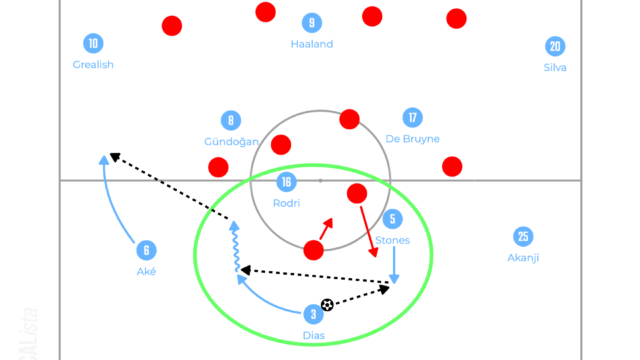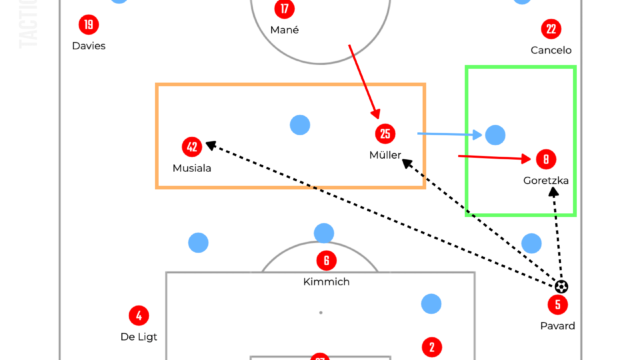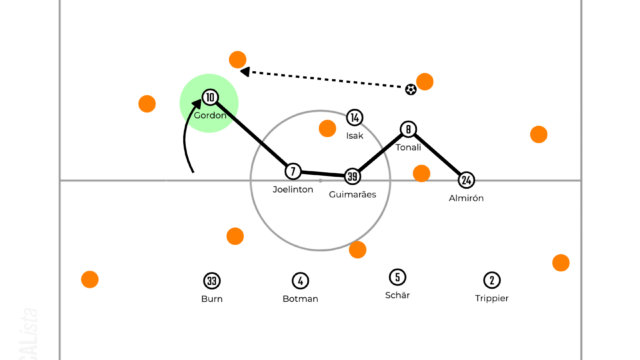Fernando Diniz’s Relational Football [Fluminense FC & Brazil Tactical Analysis 2023]
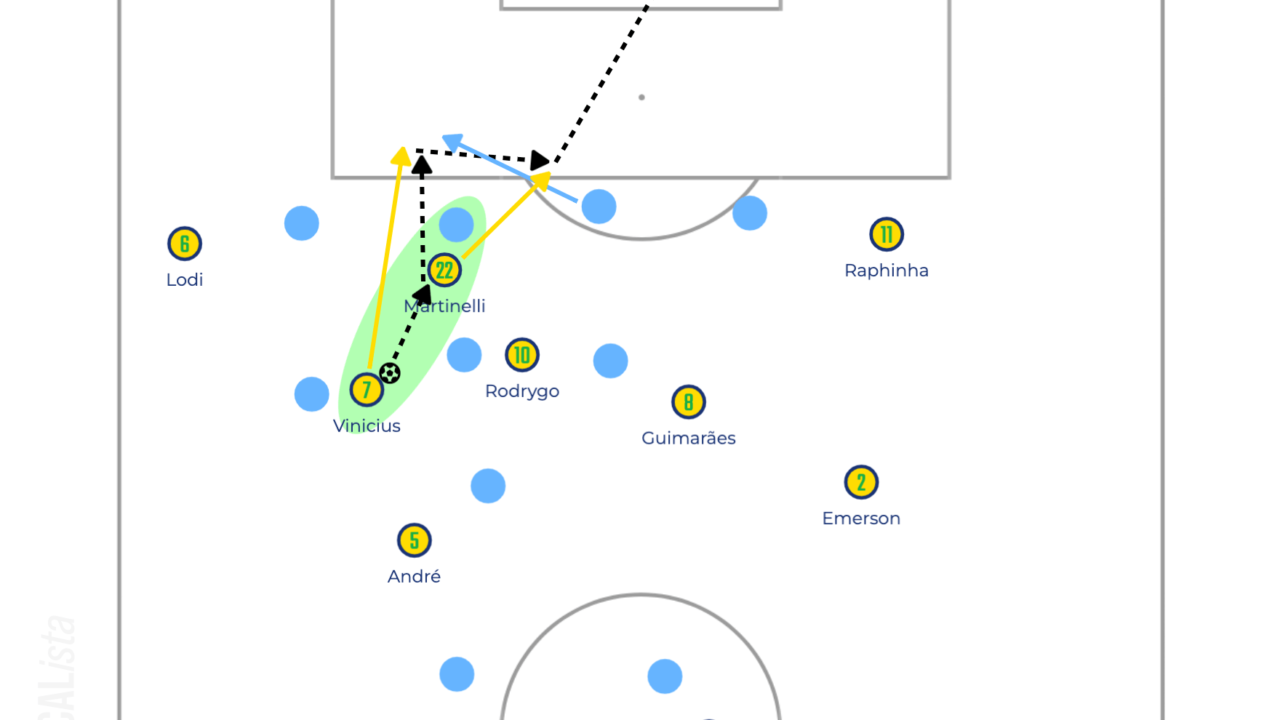
Overall
Relational play is one of the emerging terms to describe a certain kind of football not only on the internet but also from some managers’ comment. It is considered to be the opposite way of playing football to positional play which has been flourished by mainly Spanish managers such as Pep Guardiola or Juanma Lillo in this decade. Positional play is all about creating advantages of the number of players in a certain area by positioning the players in proper positions. Contrary to this logic, relational play is solving the situation by the quality of their players, which can be the individual skills on the ball or intuition or the combinations with a few players. The main man of leading this idea is Fernando Diniz who manages Fluminense in the Brazilian league and Brazil national team as the interim manager.
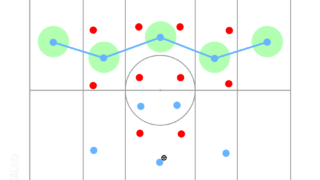
In this article, Fernando Diniz’s Fluminense and Brazil national team are going to be analysed to understand the tactics of one of the most exciting managers in the world. I hope you will enjoy this analysis.

Build up
Diniz’s teams are hugely possession based. They hardly force to play long and try to establish the possession with many short passes to beat the opposition pressing. They often play horizontally to beat the opposition pressing which tries to lock them in instead of playing through or over to exploit the space in behind.
In the context of positional play, the most important thing is creating an overload by being in the right positions. To achieve this, many managers analyse the opposition pressing so deeply and prepare the build up tactics for each game. On the other hand, Diniz’s team does not care about the positions or formation. If they can keep the possession and beat the opposition pressing, everything is fine. He does not care about how to keep the passes as long as the team can beat the opposition pressing and progress into the midfield. In positional play, the positions help them to play in bigger and better area, but there is no positional support for them in relational play. Therefore, the individuals are required to possess the skill to control the ball very well. Let’s have a look at what kinds of skills Fluminense or Brazil players possess.
Fluminense
Even after regaining the ball in the deep area of their half, they hardly rely on long balls, but they try to keep the ball with many short passes. According to WhoScored.com, in Campeonato Brasileiro Série A, which is the Brazilian tier 1 league, Fluminense recorded the most passes per game (553.5), the most accurate short passes per game (467.1) and the most average percentages of the possession (62.0%) last season. You do not need to know these stats to understand their style if you can watch their games, but that tells a lot.
The extreme possession based style is supported by the skills and mentality of their players. They are never afraid of losing the ball in front of their own goal and try to beat the opposition pressing. Even the goalkeeper Fábio can take an extra touch to move the ball little bit and to find a passing lane which the opposition striker tries to screen. Additionally, the centre backs Nino and Felipe Melo can control the ball with their studs on the ball to stop the opposition pressing and carry it to fixate another opponent to create a spare player. Like these skilful players at the back, all players do not lose the ball in every 1v1 easily and also they can keep the ball as a group in numerical equal situations with combinations of split passes and lay offs.

By carrying the ball towards the opposition player, it is possible to fixate him because he cannot escape from the player on the ball. This forces him to step out and leave his marker, which creates space or generate a passing lane behind him. If the team in possession only plays passes without carrying the ball, it is so easy for the opposition to find men to apply pressure. However, if the player on the ball carries it and beats his marker, everyone else needs to adjust each position quickly, which causes so many troubles.
Additionally, playing a split pass forces the opponents to turn their body angle inside and a quick lay off forces them to turn their body angle again. This will make it difficult for them to see the ball and their man at the same time and quick and repetitive turns of body angles causes the delay of pressing.
The superiority of these individual’s and group’s tactical behaviours enables them to keep the ball under the opposition high pressure in the deep area of their own half.
From goal kicks, the goalkeeper just gives the ball to one of the defensive midfielders, often André who picks it up to carry it forwards.

As it was discussed, carrying the ball forwards makes it so difficult for the opposition to press because the ball can be always under someone’s control which means it can be played everywhere, anytime. Therefore, the opponents cannot step up to apply pressure on the ball, so they are forced to stop pressing.
Their main objective of building up is progressing into the midfield without losing the ball, so they hardly increase the tempo by playing vertically. Finding a spare player in the ball side with an overload or switching the ball to beat the opposition pressing which tries to lock them in is their basic build up objective.

Like the illustration above shows, they tend to gather many players around the ball in small space and this is one of the characteristics of relational play. Additionally, they seem to move freely and the randomness makes it difficult for the opposition to press. However, there are tendencies based on the players’ profile. Therefore, the rules behind that are going to be discussed.
Firstly, as they keep the ball in the deeper area of the pitch, many players drop back to offer passing lanes. The double pivots André and Matheus Martinelli tend to drop into the back line and the attacking midfielder Paulo Henrique Ganso often drifts outside by either of the touchlines or even between the fullback and centre back. Moreover, the right winger Jhon Arias frequently drops into the space between the lines, which is stretched by the midfielders dropping back. Even the striker Germán Cano or the left winger Keno sometimes drop into the midfield, but the timing is later than Arias. So, when even Arias is marked by the opponent, they drop back to offer passing lanes.
In addition to these “dropping movements”, the centre backs or fullbacks can be pushed higher or inside to utilise the space opened by the dropping or drifting midfielders. When one of the midfielders drop into between the centre backs, either of the centre backs can be moved higher as a fullback. Or, when one of the midfielders such as Ganso positions himself between the centre back and fullback, the fullback can move inside to use the space in the middle of the pitch, which is Marcelo’s one of the favourite movements.

This is not a pattern, but they adjust their positions immediately based on each situation. However, as it was discussed, there are certain tendencies or timings.
In addition to positioning, there are some shared movements or passing patterns. As many players drop around the ball in the deep area of their own half and most movements are towards backwards, to progress as a team, moving forwards is so important. Most players including the centre backs always move forwards after playing to a player outside.

After playing to a player by the touchline, most players make a run forward. If it is possible to receive the ball after moving higher, that would be great. However, even if the movement forward is marked by the opponent, it is possible to leave space behind him, where another player can receive the ball by moving higher as well. As they prefer playing in small area with many players, if there are no movements, they will be just stuck. Therefore, movements are really important and it is well organised (contrary to the idea that the players are playing completely freely).
Brazil
Overall, Brazil national team have so many similarities to Fluminense, but of course there are differences. Their possession based approach such as playing short passes to beat the opposition high pressing without any wasteful long balls or the tactic of goal kicks is similar, but since there are many players who play in the European teams, they can share the idea of positional play. However, as they play a few games under Diniz, they become able to play with breaking their shape like Fluminense more flexibly. For example, against Bolivia, which was the first game under Diniz, their shape was more static and positional than recent games.

Against Bolivia, they controlled the possession with the 3-1 shape at the back with Casemiro dropping into the back line, which is a same structure with Fluminense. The opposition deep defensive block perhaps let them be more positional, but in fact, the attackers up front respected each position and maintained the balanced shape.
In recent three games, however, they played out from the back with more players around the ball and the imbalanced shape like Fluminense. The back four and two defensive midfielders basically maintained their shape, but the attackers up front left their positions frequently to join the ball side to create overloads.
Against Uruguay, the attacking midfielder Neymar and the right winger Rodrygo often dropped back to create an overload. This is similar to what Fluminense do with the attacking midfielder Ganso and the right winger Arias. On the other hand, the left winger Vinicius Júnior and the striker Gabriel Jesus tended to stay higher to pin the opposition back line.

Neymar sometimes dropped in front of the opposition midfielders and played like a defensive midfielder to distribute the ball to either of the wingers. The flexibility in the midfield is one of the biggest features of Diniz.
Against Colombia and Argentina, the players had been changed and it influenced so much because relational play is all about who are playing. Casemiro was replaced by André who knows Diniz’s football so much, Gabriel Martinelli started as the right winger for both games and the right back were played by Emerson Royal who has flourished as the inverted fullback at Tottenham Hotspur.
Against Uruguay, Vinicius kept the width in the left flank, but on the other hand, Martinelli inverted a lot against Colombia and Argentina, which made the left side so flexible. Moreover, Raphinha and Emerson also played both inside and outside, which helped them to rotate effectively in the right side.

Rodrygo, Vinicius and Martinelli can play both inside and outside, so the rotation in the left side was very active, which helped the other players to find one of them to play through. Additionally, Raphinha often left his position and drifted to the left side to create an overload in the ball side. The overall structure when building up was similar against Argentina as well.
The similarities between Fluminense and Brazil are the mentality of playing out from the back with short passes and carries and the flexibility of the attackers up front, who often drop back or drift to the opposite side to create overloads around the ball. On the other hand, the biggest difference is that Brazil can play out from the back with more solid structure at the back. Fluminense rotate even the centre backs and defensive midfielders many times, but Brazil do not need to do it to beat the opposition pressing. This can be because they have better tactical intelligence to play out from the back as a team or the opposition pressing is not as organised as club teams.
Middle Third & Final Third Attacking
Beating the opposition high pressure is their main strength, but they often suffer with breaking down the opposition collective blocks. This is mainly because that as they gather many players around the ball, there is only a few players in the box and they rely on the wingers’ 1v1 so much.
Fluminense
Against the mid block or low block, in three games I could watch, which were the final of CONMEBOL Libertadores against Boca Juniors and two games of FIFA Club World Cup, they were not so much effective. Of course, these three games were two finals and a semi final of the international competitions, so it is reasonable to assume that the level of the oppositions was much better than average teams in Brazil. Therefore, it is quite difficult to evaluate their performance with proper standards, but in other words, it is a good opportunity to understand the room for improvement, which can suggest that what relational play needs to overcome to take over positional play (I believe that both philosophies will be combined in the near future though).
Even though their shape is extremely flexible, it is important to know the basic shape. In the midfield, they control the possession with the two centre backs and two defensive midfielders while pushing other players up front.

Either of the defensive midfielders drops into between the centre backs to form the back three and the other defensive midfielder becomes a single pivot. This is the basic structure at the back to control the possession in the midfield or final third. This tweak enables the centre backs to step in with the ball or receive a pass which breaks the first pressing line.
Other six players are more flexible and they gather many of them around the ball like they do when playing out from the back. They do not care about keeping the width in the opposite flank and focus on playing through in the ball side with more players.
Similar to build up, they prefer creating an overload by the touchline and using underlapping movements.

As the illustration above shows, they can have four or five players in the ball side and try to use the movement of underlapping the player on the ball by the touchline. This pattern is often performed when playing out from the back as well, so it is reasonable to think that this “give & go” is one of the most important movements in Diniz’s Fluminense. They repeat this “give & go” so many times and it makes them so flexible in possession. Then, eventually they want to play a through ball to someone running through the channel.
However, since they have many players around the ball, there is often only the striker Cano in the box. Therefore, even though he often positions himself in the blind side of the opposition centre backs and makes a great movement to receive a cross, the lack of the attackers in the box is not a good thing. Additionally, their combinations in the small area are often unsuccessful. They largely rely on the winger’s quality of a 1v1 or midfielders’ shots from the outside the box, which are more individual performance and difficult things. Perhaps this thought is too biased by the view of European football context because maximising the individual abilities and relying on the individuals are sometimes close. For me, they rely on the individuals too much, but for them, it can be opposite. Only their successful and beautiful combinations are highlighted on the internet, but in fact, they used so many simple long balls in behind and delivered simple crosses in the midfield or final third.
Another weakness is the defensive transitions. They make it a back three in the midfield or final third with one of the defensive midfielders dropping into the back line, but the centre backs or the defensive midfielder on the ball aggressively carry it forwards or move higher. Thus, there are often only two players at the back as both fullbacks also like to go higher, so it is possible for the opposition to exploit the huge space in wide areas with simple long balls.
Brazil
In the final third, the similarity is creating an overload in the wide areas and playing to someone underlapping the player on the ball to penetrate into the box. Like Fluminense, they use “give & go” movements a lot to keep moving and attacking flexibly in small area with many players. However, Brazil is better at penetrating the opposition defensive block with a split pass.

The best example would be the goal against Colombia. Vinicius played a split pass into Martinelli who laid it off back to Vinicius to beat the opposition centre back. Then, Vinicius squared the ball to Martinelli after the other opposition centre back was dragged out and he took a shot first time. This shows their high level of combinations which is the most important thing in relational play.
Fluminense tend to attack only from each flank, but Brazil can play through the middle as well. This is something superior to Fluminense. Moreover, the individual quality is much better than Fluminense, so they often exploited the advantage of 1v1s of the wingers against the opposition fullbacks.
Compared with Fluminense, Brazil got the wingers to stay wider in the opposition final third to let them play a 1v1. The defensive midfielders often played big switches to the opposite winger to make the most of it.

As soon as the winger receives the ball, the fullback makes a movement of overlapping or underlapping to create a 2v1. This is a classic movement, but Emerson and Augusto can play both inside and outside, which makes it easier to combine with the wingers very well. Fluminense do not keep the width as often as Brazil, but the intention is clear that Brazil want to maximise the wingers’ individual superiority.
Even though Diniz can have better players for Brazil, but the weakness is still similar. They rely on the individuals, so when they face the teams like Uruguay, Colombia or Argentina, they cannot get the advantages.
Out of Possession
Relational play is largely related to the tactics of in possession, but it is important to know his out of possession tactics. Relational play sounds freedom approach of football, but in terms of defending, the discipline should be imposed. Both in Fluminense and Brazil, he uses a 4-4-2 system for out of possession. They press high, but after the pressing is beaten, the back line drops early and try to have many players in front of the goal.
To be fair, their pressing is not as collective as European zonal defending. The whole shape is vertically not compact and the defensive midfielders are exposed in the huge gap between the first line and back line.

Both Fluminense and Brazil do not maintain the vertically compact shape, so the defensive midfielders need to cover huge space. Sometimes one of the centre backs steps up to tightly mark one of the opponents in between the lines, but the problem is the two strikers. They cannot work together to close the middle, so one of the defensive midfielders need to jump to mark the opposition pivot or defensive midfielder to press high. Otherwise, the two strikers are isolated and the opposition can easily control the possession with their defensive midfielders, which has happened quite frequently.
Overall, Diniz’s team often try to press high, but as they cannot press collectively, the shape is frequently stretched, which enables the opposition to exploit the space and beat the pressing.
In the final third, they prioritise to prevent the opposition from creating overloads. Therefore, when the opposition has the attackers in wide areas, the wingers often drop back into the back line. This causes the lack of players in front of the back line, so the opposition can easily dominate the possession comfortably. Consequently, the back line is pinned inside the box for a long time and they cannot push the line up due to the lack of pressure on the ball.

Fluminense conceded the goal from the outside the box when they defended so deep against Boca and Brazil conceded two goals from crosses from the outside the box after being pinned in the box and letting the opposition deliver crosses comfortably.
Brazil had lost three games in a row against Uruguay, Colombia and Argentina and they conceded four goals against Uruguay and Colombia so cheaply. These four goals were conceded from two crosses from the outside the box and two cut backs. In all cases, they let the opponents take a shot without any pressure. In terms of cut backs, which were delivered from the situation after throw ins, the defensive midfielders were not ready for marking the opposition attacker in front of the back line. Two goals conceded from crosses against Colombia were caused by the lack of pressure in the wide areas and poor defending in front of the goal. And also, the goal conceded against Venezuela was also scored by a cross.
It is difficult to say that they have great structure of pressing and defending the final third. The shape is often stretched and in the box, they cannot apply tight pressure on the ball and let the opponent take a shot. This should be improved by Diniz to be more stable teams.
Conclusion
It was a great opportunity to watch football with a different idea. From Fluminense, I could learn the importance of the skills of individuals and small groups. They possess the high level skills on the ball such as controlling the ball or carrying it to stop the opposition pressing. In addition to these individual skills, their “give & go” movements can create space in tight area to create space away from the opposition marker to receive the ball and keep moving the ball. These skills might not be noticed when only focusing on playing simple.
From Brazil, it was possible to learn how to play through the middle with two or three players. Additionally, since most players are playing in Europe and know different cultures, the harmony between relational play and positional play could be found. They build up with more positional way and attack the goal with more rotational way. As long as I understand now, Ancelotti will stay at Real Madrid, so Diniz is likely to manage the national team in Copa America. I cannot wait to watch them and am looking forward to seeing their improvements from current state. Thank you for reading. I hope you enjoyed this article.
